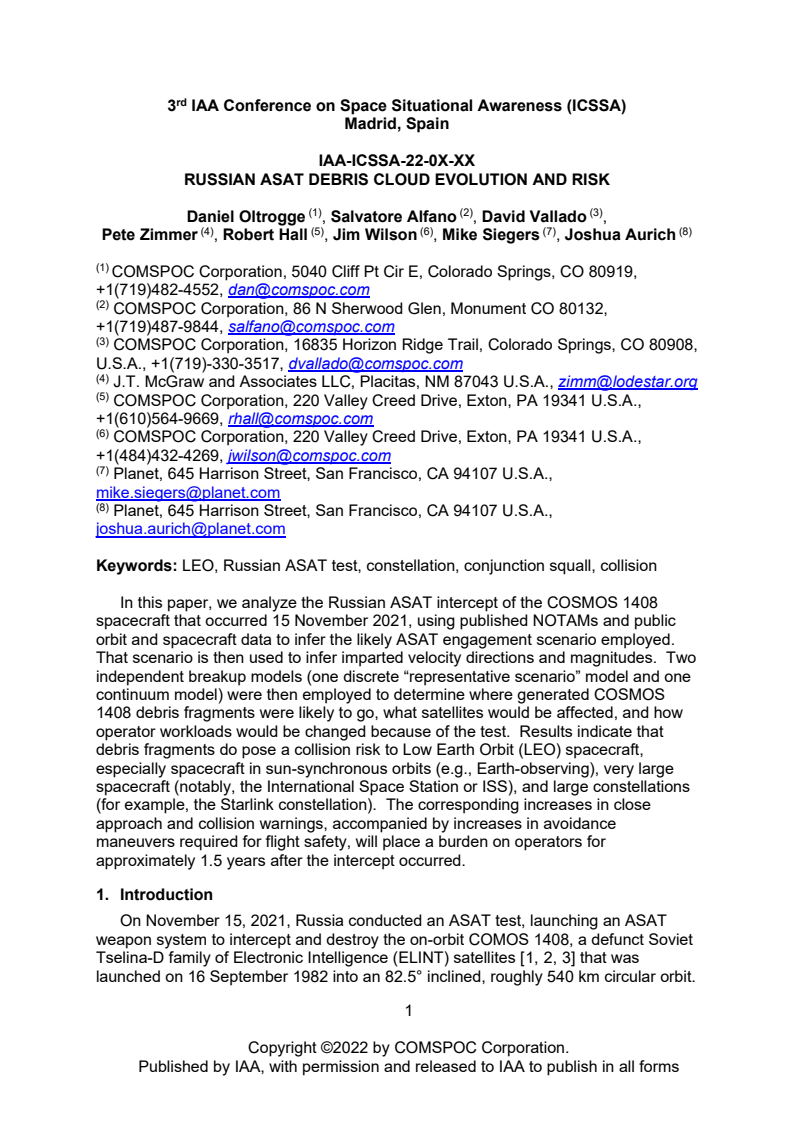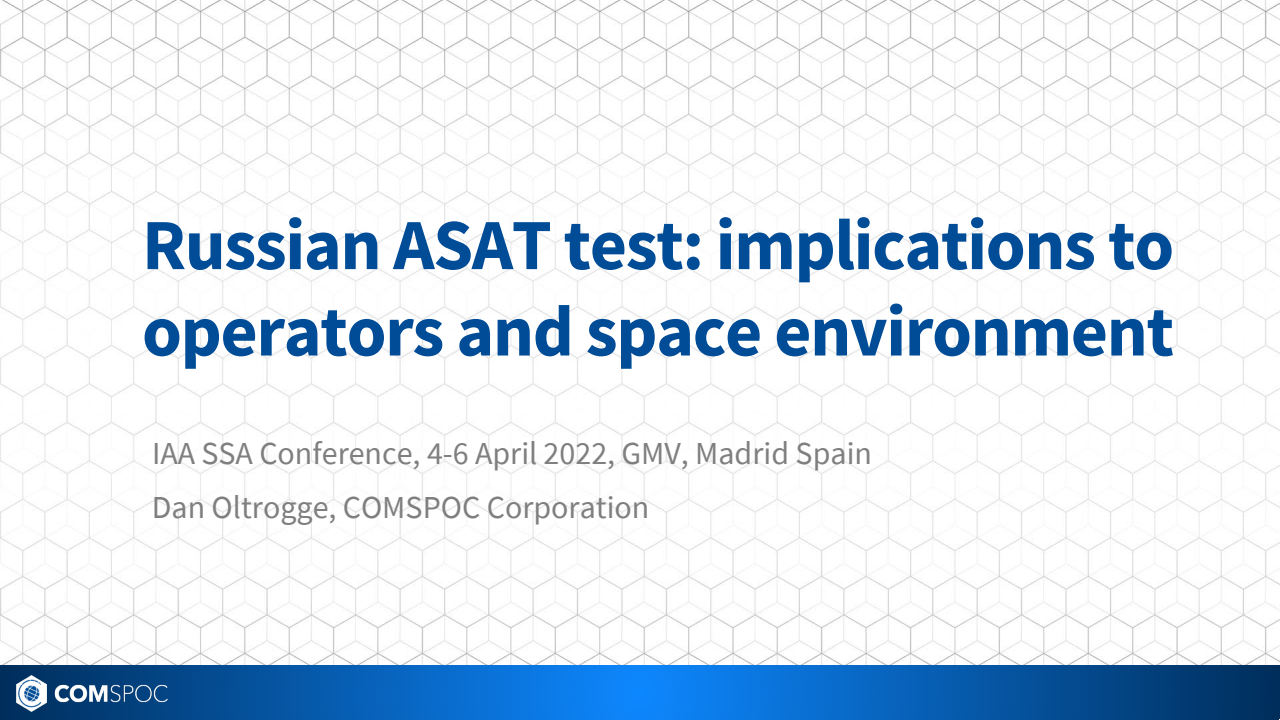Russian ASAT Debris Cloud Evolution and Risk


Id: 237
Type: Conference paper
Published: 04/05/2022
Event: 3rd IAA Conference on Space Situational Awareness 2022
Authors:
Click an author to filter the list of related assets below.Abstract:
In this paper, we analyze the Russian ASAT intercept of the COSMOS 1408 spacecraft that occurred 15 November 2021, using published NOTAMs and public orbit and spacecraft data to infer the likely ASAT engagement scenario employed. That scenario is then used to infer imparted velocity directions and magnitudes. Two independent breakup models (one discrete “representative scenario” model and one continuum model) were then employed to determine where generated COSMOS 1408 debris fragments were likely to go, what satellites would be affected, and how operator workloads would be changed because of the test. Results indicate that debris fragments do pose a collision risk to Low Earth Orbit (LEO) spacecraft, especially spacecraft in sun-synchronous orbits (e.g., Earth-observing), very large spacecraft (notably, the International Space Station or ISS), and large constellations (for example, the Starlink constellation). The corresponding increases in close approach and collision warnings, accompanied by increases in avoidance maneuvers required for flight safety, will place a burden on operators for approximately 1.5 years after the intercept occurred.
Keywords:
Click a keyword to filter the list of related assets below.Citation:
Oltrogge, D.L., Alfano, S., Vallado, D.A., Zimmer, P., Hall, R.H., Wilson, J., Siegers, M., and Aurich, J., “Russian ASAT Debris Cloud Evolution and Risk,” 3rd IAA Conference on Space Situational Awareness, Madrid Spain, 4-6 Apr 2022, accessible at https://comspoc.com/Resources/Content/Private/C-20220423T080219/Paper/20220403_Russian_ASAT_Impact_to_Operators_FINAL.pdf.
Papers with related authors:

Actionability and Persistence Of Conjunction Data
Read More
Actionability and Persistence of Conjunction Data
Read More
Actionability and Persistence of Conjunction Data
Read More
Using Spacebook and Cesium to Promote and Enhance Flight Safety
Read More
Practical issues with using a full gravity field
Read More
Deep operator and SSA collaboration for space sustainability
Read More
Synthetic Covariance Production Using a New Digital Approach
Read More
DEEP OPERATOR AND SSA COLLABORATION FOR SPACE SUSTAINABILITY
Read More

Results of comprehensive STCM data fusion experiment
Read More
Addressing the debilitating effects of maneuvers on SSA accuracy and timeliness
Read More
Debris Risk Evolution And Dispersal (DREAD) for post-fragmentation modeling
Read More
Fragmentation event debris field evolution using 3d volumetric risk assessment
Read More
Application of New Debris Risk Evolution And Dissipation (DREAD) Tool to Characterize Post-Fragmentation Risk
Read More
Updated Analytical Partials for Covariance Transformations and Optimization
Read More






LEO satellite behavior during the May 2024 Gannon geomagnetic storm
Read More
Contrasting the Inflection Points and Efforts in Space Traffic Coordination and Management
Read More






Sequential Processing of ILRS Observations – Experiences over the last 5 years
Read More


Orbital Strategies to Mitigate the Solar Exclusion Effect on Space-Based Observation of the Geosynchronous Belt
Read More
New Consolidated Files for Earth Orientation Parameters and Space Weather Data
Read More
Sequential Orbit Determination Using Satellite Laser Ranging
Read More
Improved SSA through orbit determination of Two Line Element Sets
Read More


Evaluating Gooding Angles-only Orbit Determination of Space Based Space Surveillance Measurements
Read More
ORBIT DETERMINATION ISSUES AND RESULTS TO INCORPORATE OPTICAL MEASUREMENTS IN CONJUNCTION OPERATIONS
Read More


Videos with related keywords:
Kinetic Kill – Direct Ascent ASAT (Russia)
Watch VideoTJS-10 On-Orbit Behavior
Watch VideoLarge constellation applications through 2034
Watch Video


